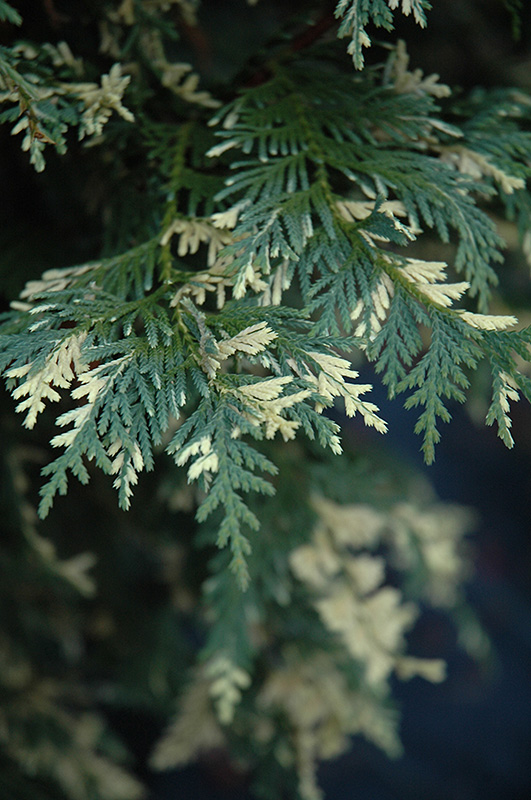Cedar, Alaskan Variegated Chamaecyparis nootkatensis 'Aureovariegata' Height: 30 feet Spread: 15 feet
Sunlight:
Hardiness Zone: 5a Other Names: Alaska Cedar, Nootka Falsecypress, Xanthocyparis Description: A truly show-stopping evergreen, featuring bright green foliage splashed with bright yellow, forms a graceful upright oval shape, absolutely wonderful accent tree for small landscapes; very adaptable to our climate Ornamental Features Cedar, Alaskan Variegated is primarily valued in the landscape for its decidedly oval form. It has attractive buttery yellow-variegated white foliage. The scale-like sprays of foliage are highly ornamental and remain white throughout the winter. The shaggy antique red bark adds an interesting dimension to the landscape. Landscape Attributes Cedar, Alaskan Variegated is an evergreen tree with a shapely oval form. Its average texture blends into the landscape, but can be balanced by one or two finer or coarser trees or shrubs for an effective composition. This is a relatively low maintenance tree, and can be pruned at anytime. It is a good choice for attracting birds to your yard, but is not particularly attractive to deer who tend to leave it alone in favor of tastier treats. It has no significant negative characteristics. Cedar, Alaskan Variegated is recommended for the following landscape applications; Planting & Growing Cedar, Alaskan Variegated will grow to be about 30 feet tall at maturity, with a spread of 15 feet. It has a low canopy with a typical clearance of 1 foot from the ground, and is suitable for planting under power lines. It grows at a medium rate, and under ideal conditions can be expected to live for 50 years or more. This tree does best in full sun to partial shade. It does best in average to evenly moist conditions, but will not tolerate standing water. This plant should be periodically fertilized throughout the active growing season with a specially-formulated acidic fertilizer. It is not particular as to soil type or pH. It is somewhat tolerant of urban pollution. This is a selection of a native North American species. Special Attributes Sheds some inside foliage in the autumn or spring, few to some 1/4 to 1/2 inch seeds. Chamaecyparis are not classified as toxic to people or pets. Evergreens need to be watered during the winter. Our desert climate especially in late winter to early spring evergreens can suffer during next growing season. An easy way to remember check for dryness on the holidays Halloween, Thanksgiving, New Year's Day, Valentines Day & Easter.![]()
![]()
![]()
![]()
![]()
![]()
![]()
![]()
![]()
![]()
![]()
![]()
![]()
![]()

